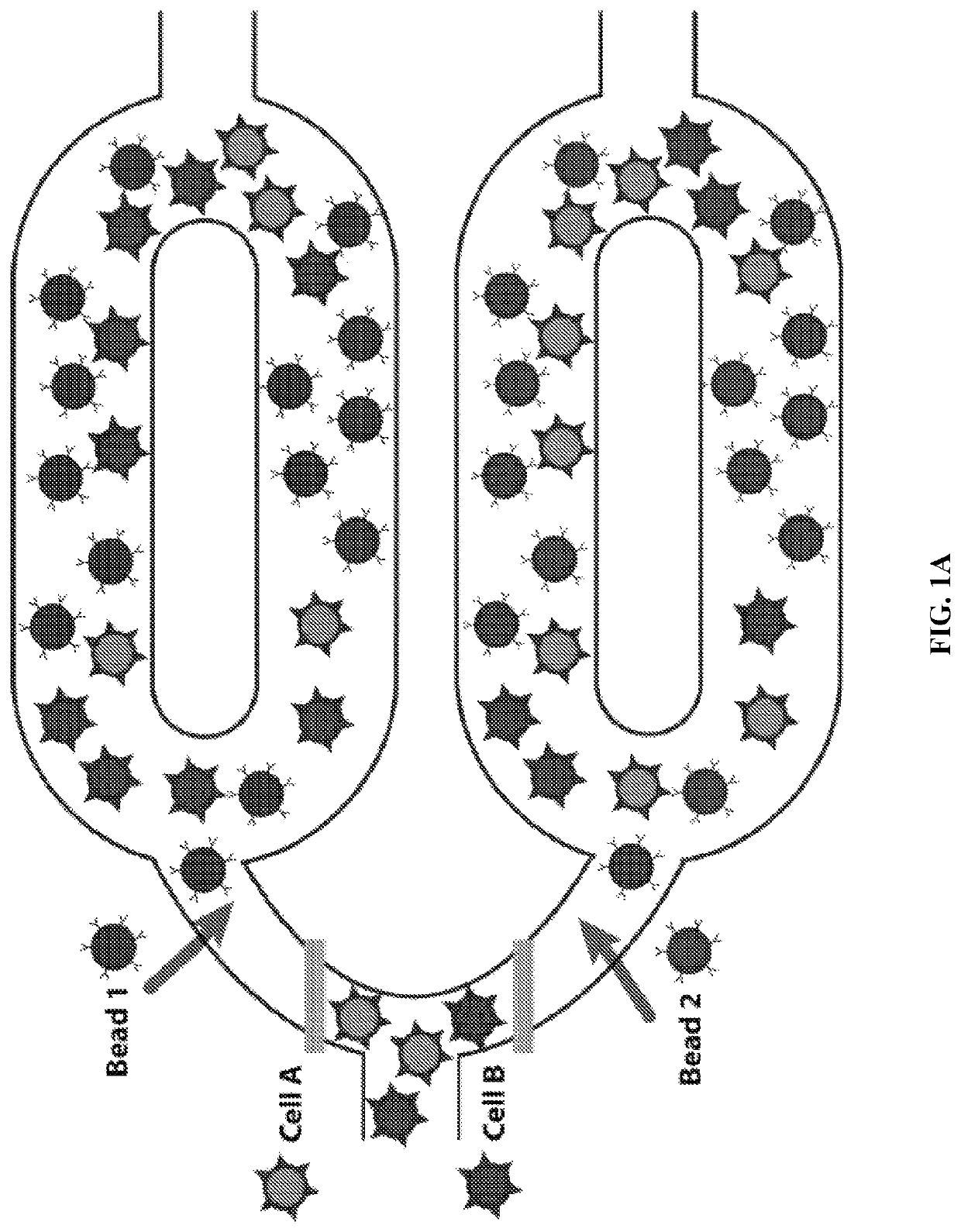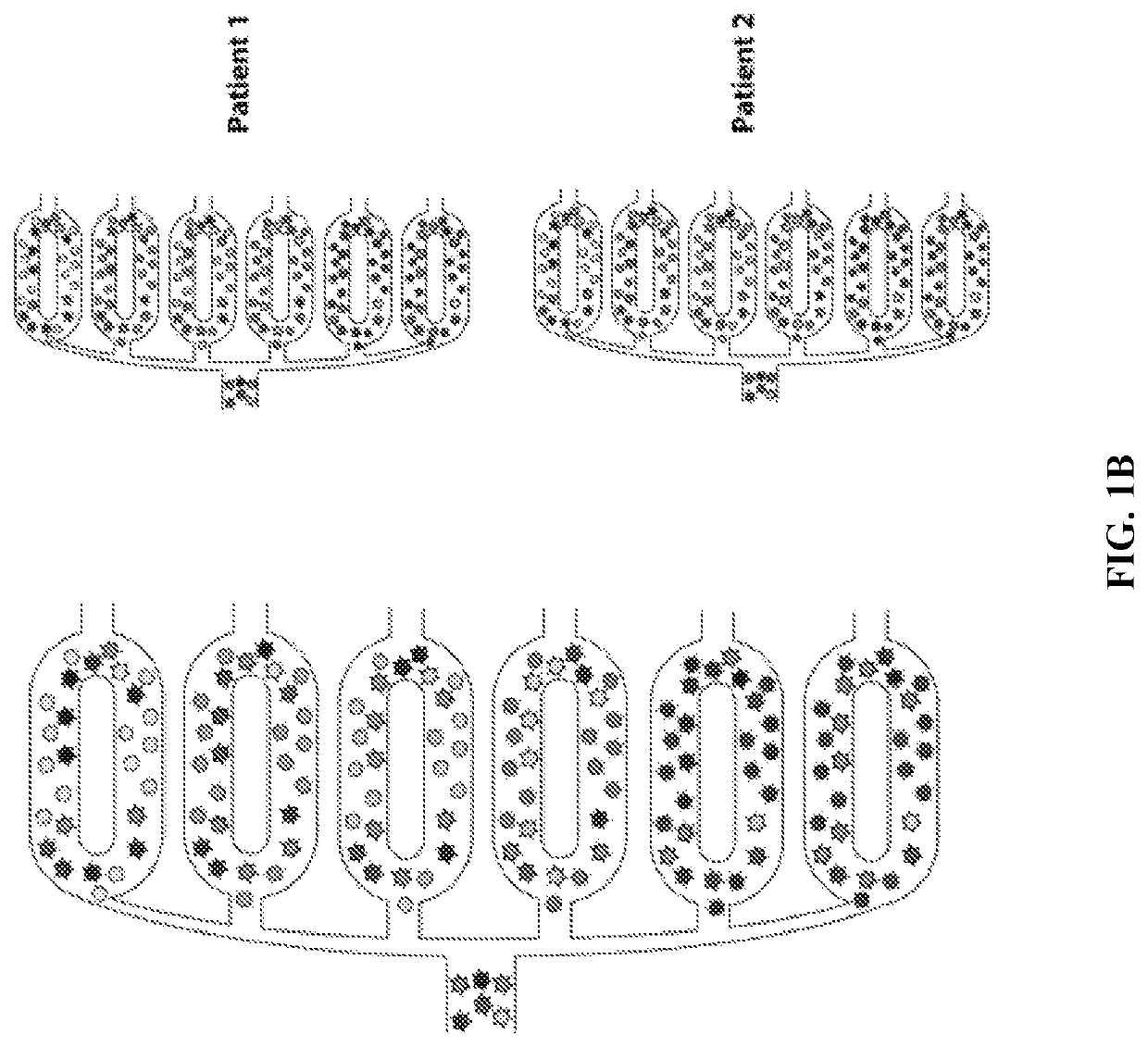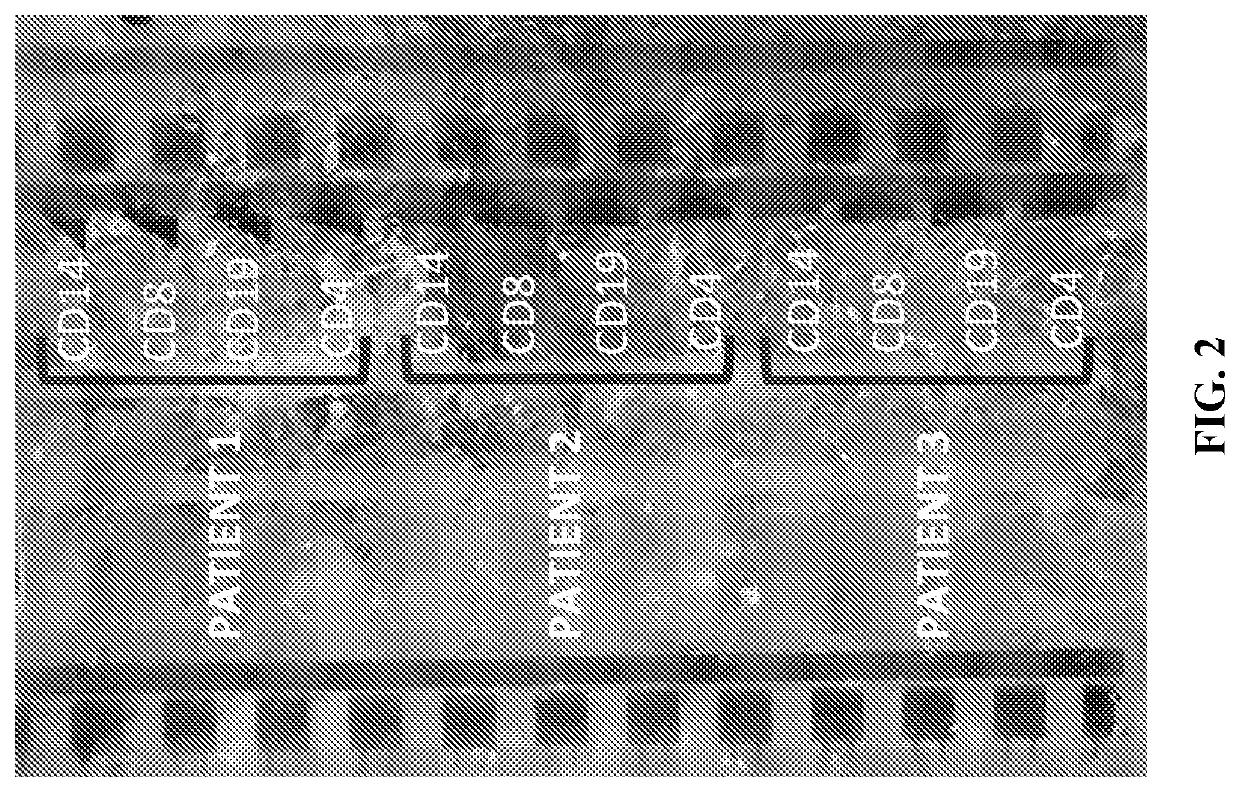Multi-stage, multiplexed target isolation and processing from heterogeneous populations
a heterogeneous population and target technology, applied in the field of multiplexed target isolation and processing from heterogeneous populations, can solve the problems of increasing the cost of sample preparation, limiting the factor of sample preparation in genomic analysis, and deploying ngs for applications
- Summary
- Abstract
- Description
- Claims
- Application Information
AI Technical Summary
Benefits of technology
Problems solved by technology
Method used
Image
Examples
Embodiment Construction
[0060]The present disclosure provides an apparatus and method for the sorting of biological material that does not involve a column and is intended to improve throughput and speed of the sorting process. Inventors of the present invention began with an overall goal to develop a system for cellular profiling of multiple cell populations in hundreds (or thousands) of Systemic Lupus Erythematosus (“SLE”) patients, although the present techniques are not intended to be limited to these specific cell types. Inventors identified a need for more effective means of profiling cell subtypes from blood in order to gain understanding of numerous immune-related disorders. Autoimmune disorders are generally characterized by: autoantibodies and immune complex deposition in tissues, unclear disease mechanisms, likely involvement of B cells, also pDCs, neutrophils, and CD4 T cells; and cells from SLE patients show elevated IFN response signatures.
[0061]To achieve the prescribed goals, the inventor s...
PUM
| Property | Measurement | Unit |
|---|---|---|
| volume | aaaaa | aaaaa |
| volumes | aaaaa | aaaaa |
| frequency | aaaaa | aaaaa |
Abstract
Description
Claims
Application Information
 Login to View More
Login to View More - R&D
- Intellectual Property
- Life Sciences
- Materials
- Tech Scout
- Unparalleled Data Quality
- Higher Quality Content
- 60% Fewer Hallucinations
Browse by: Latest US Patents, China's latest patents, Technical Efficacy Thesaurus, Application Domain, Technology Topic, Popular Technical Reports.
© 2025 PatSnap. All rights reserved.Legal|Privacy policy|Modern Slavery Act Transparency Statement|Sitemap|About US| Contact US: help@patsnap.com



